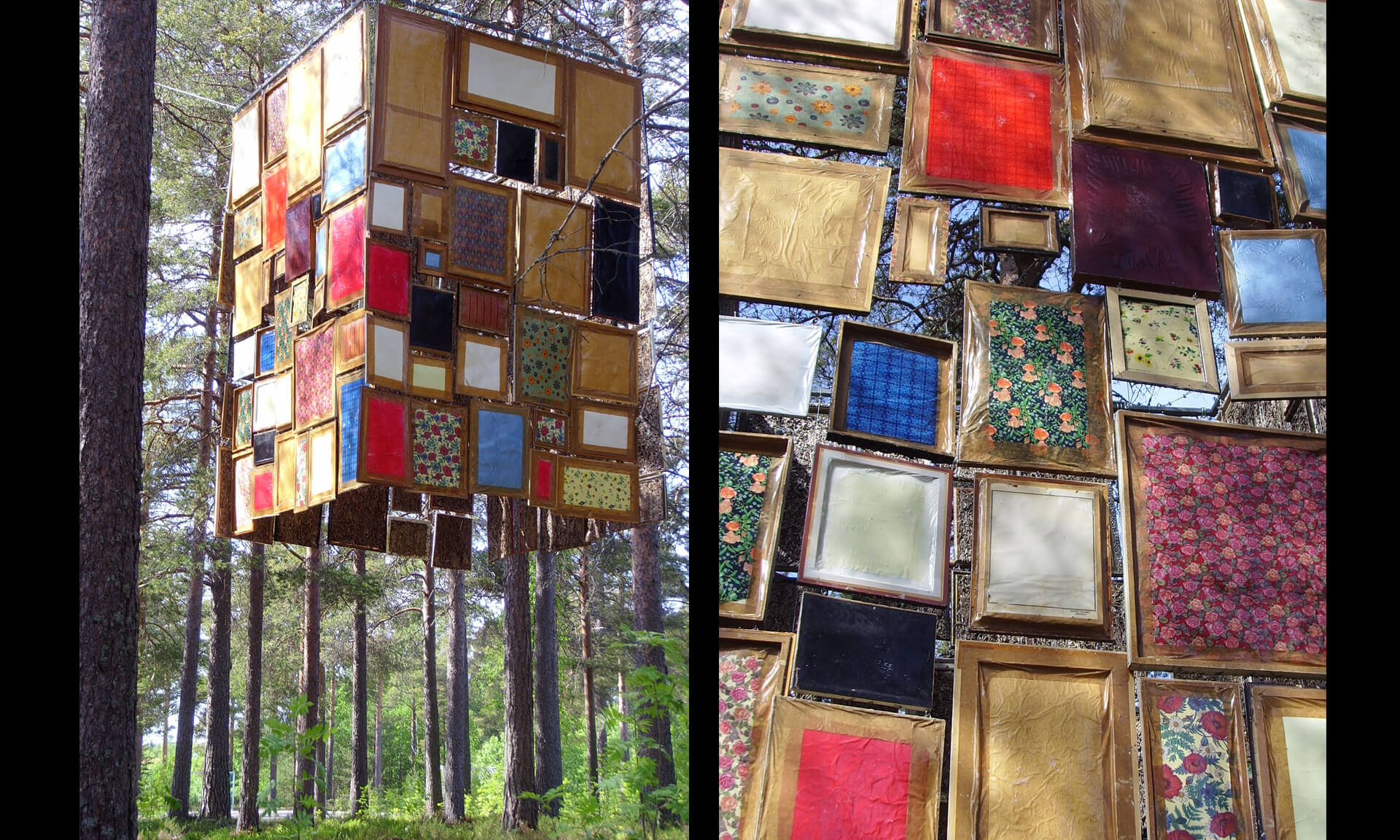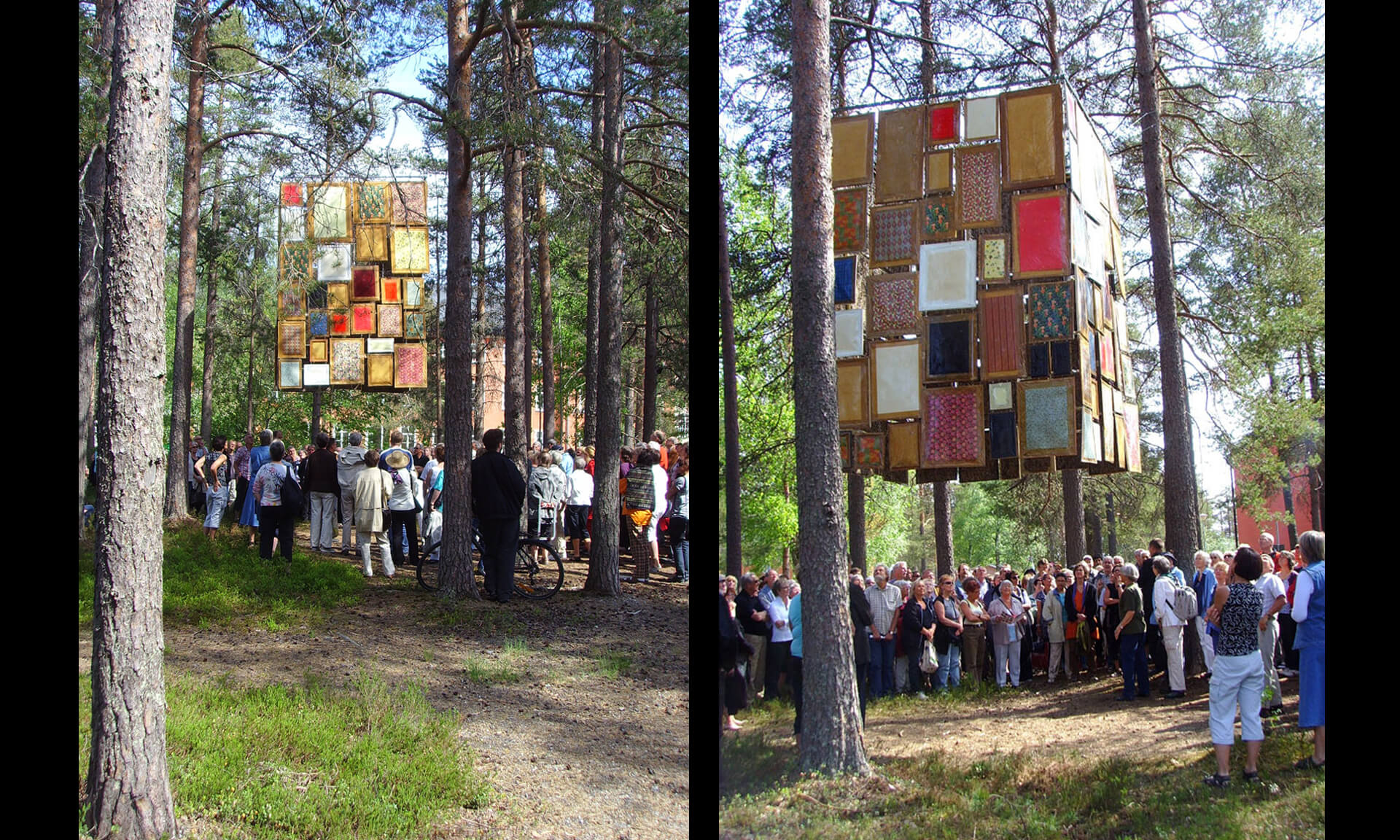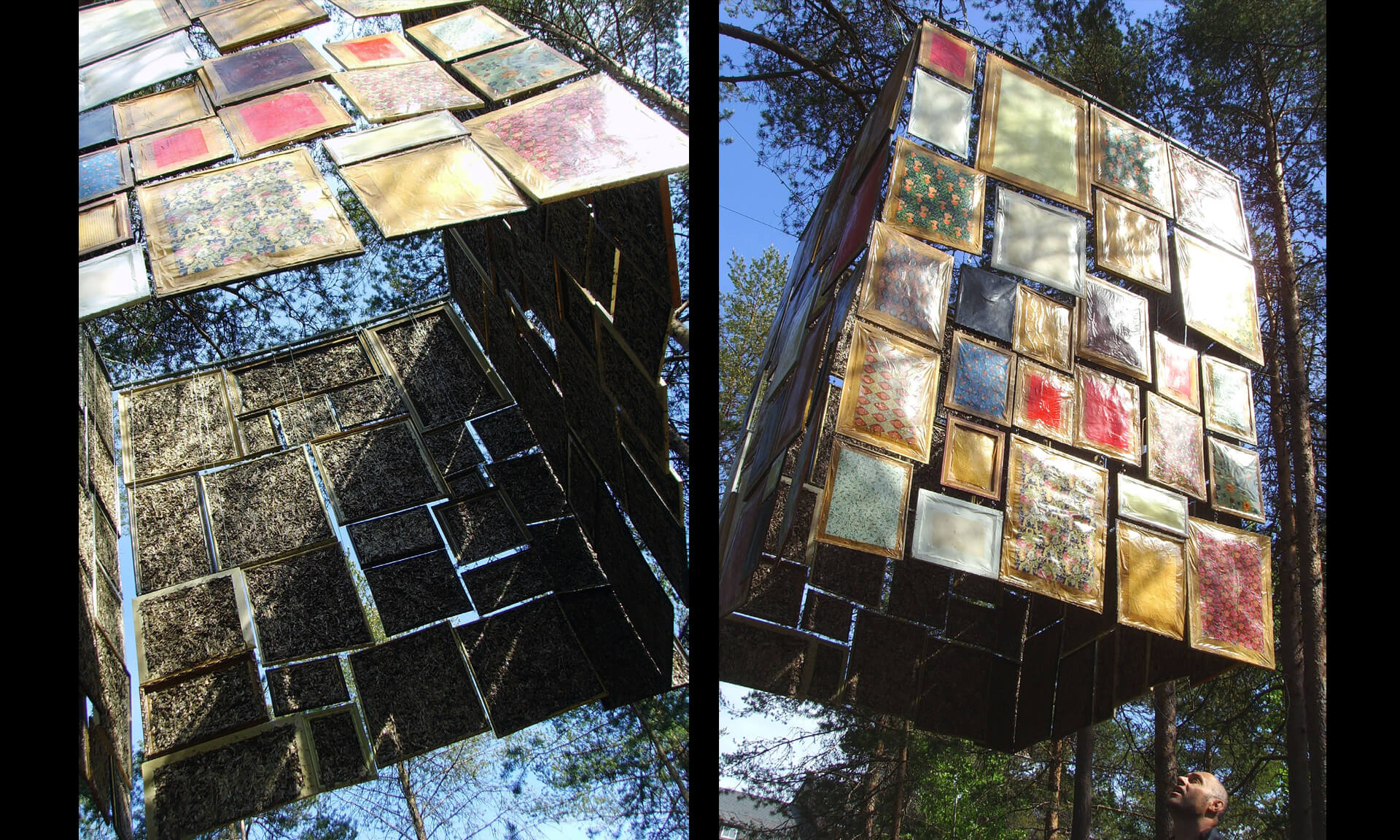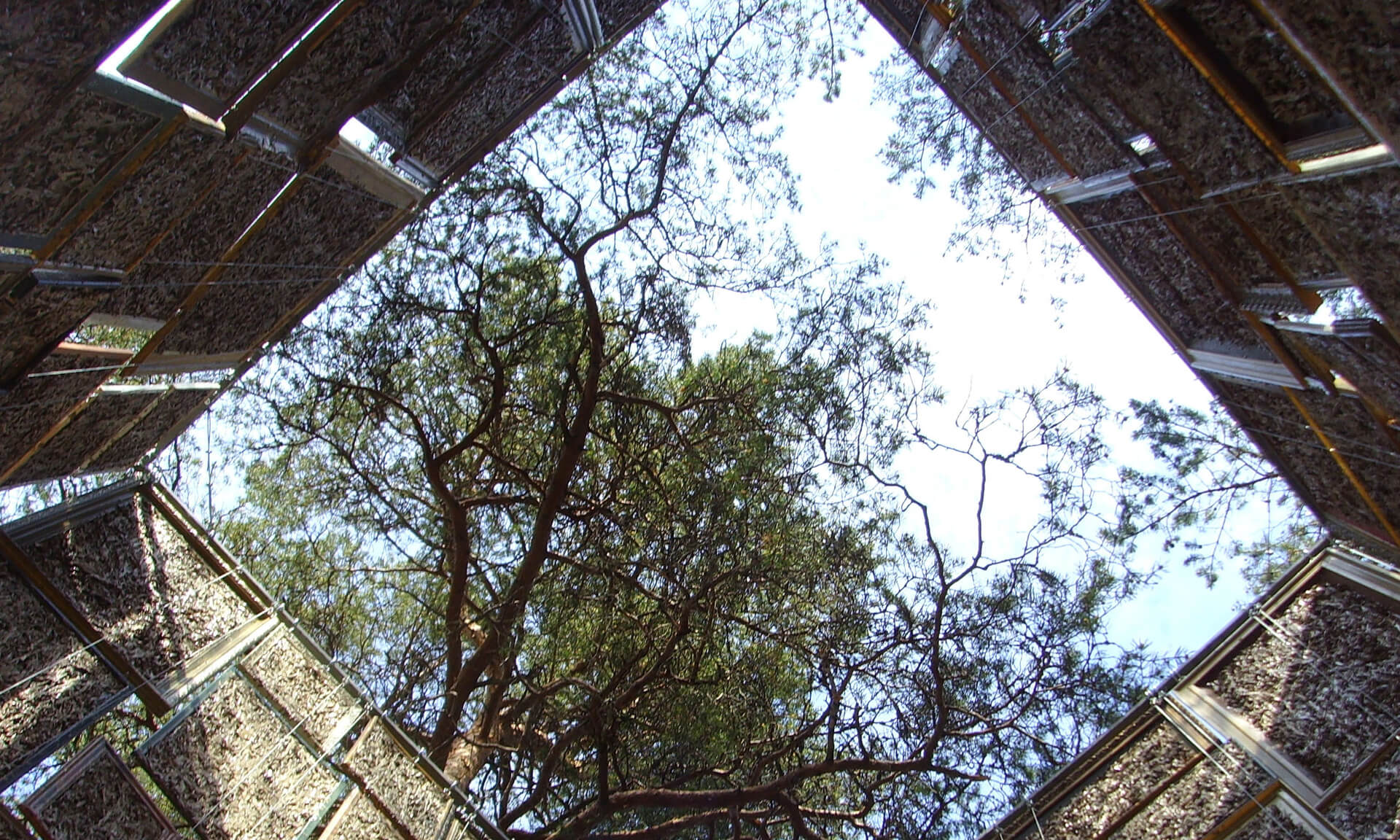A-lethe Hydor
Somatopia: Mapping Sites, Siting Bodies, London Hellenic Centre
Curated by Antonis Danos
Umedalen Sculptur, Galleri Sandström Andersson, Umea, Sweden
100 Photographic Frames hanging 550 cm from the ground, wooden frames, seaweeds, metal frame, string
250 x 250 x 350 cm
2005
In Klitsa Antoniou’s, A-Lethe Hydor, installation, over a hundred photographic frames hover above the viewer’s eye level, forming an almost architectural territory, an elevated space. A gigantic, ‘absent’, photo-collection is staged and ‘mutated’, in an effort to investigate a recurrent range of issues in the artist’s work: the negotiation of time and memory, and the process of recollection, evoking a constant (re)evaluation of personal – and collective – identity…. The understanding of this perpetual process, of allowing the present to formulate and re-address the past, lies at the core of Antoniou’s work. Becoming aware of the memory’s complex ability for alternation brings forth the aporia of a true understanding of the past, as truth itself seems to assume a painfully relative character. In order for the viewer to discover the work, Antoniou defines both an interior and an exterior zone. Found photographic frames that would normally be facing the viewer are now turned inwards, to face the interior of the constructed space suspended from the ceiling. Seen from afar, the installation appears as a patchwork of time-related fragments. When the viewer enters the interior space, he/she is forced to look upwards, into a ceiling-less impression of a confined space, only to discover what lay hidden all along. These bizarre photographic frames were emptied of their original content, only to be filled, in a meticulous and careful fashion, with seaweed, an element found in abundance along the coast of Cyprus. The seaweed acts both as a sign and as a metaphor of growth, both because of its natural ability for growth, and because it ‘defines’ the geographical border of the island. This seemingly perplexed understanding of the seaweed allows for the work to function both on a personal, as well as on a political level…. It is perhaps in the title that the essence of the work is realised. “A-Lethe Hydor” literally translates into “Water of Truth”. The word alithia (truth) derives from a synthesis of the letter ‘a’ (denoting absence) and the word lethe (forgetting). The ‘water of forgetting’ is a concept borrowed from Greek mythology. It was this water the dead had to drink before entering the kingdom of Hades, the God of the Underworld. The concept of truth linguistically derives in Greek from the comprehension of remembering, the resistance to forgetting. In a cleverly suggestive way, the Antoniou’s installation aims to understand ‘truth’ as being fluid, like the seaweed’s growth; always subject to the memory’s ability to remember, yet constantly alternating, in a way that the past cannot conflict with the sense of present – or future – personal and national identity. (Artemis Eleftheriadou, Umedalen Skulptur Catalogue, Umea, Sweden)





